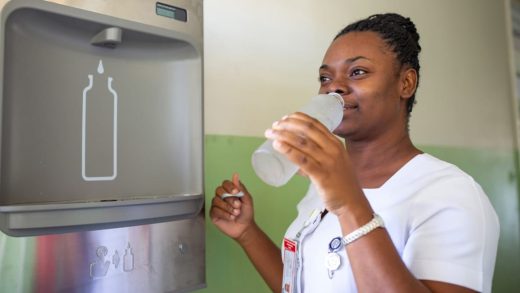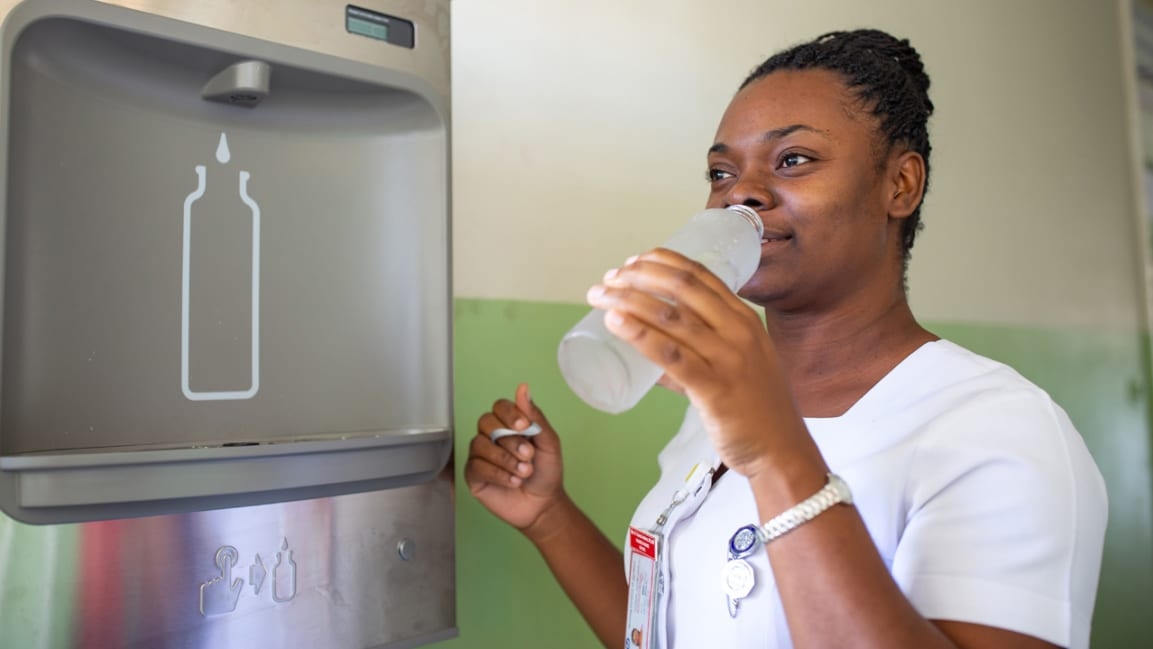The water in this hospital is all pulled out of thin air
In Jamaica, bottled water is often seen as a necessity, even though the country struggles so much with plastic pollution that the government recently implemented a countrywide ban on plastic bags, straws, and Styrofoam. At the children’s ward of a local hospital, for example, tap water isn’t safe to drink for children with compromised immune systems. It also isn’t available reliably. But the hospital now has a new source of readily available, clean drinking water: It’s using solar-powered “hydropanels” on the roof that pull moisture from the air.
“We’re not only solving for resilient drinking water but also reducing plastic waste,” says Cody Friesen, CEO of Zero Mass Water, the startup that makes the technology in use at the hospital, the University Hospital of the West Indies in Kingston, Jamaica. The project is the company’s first installation as part of the Caribbean Climate Smart Accelerator, a program that aims to build resilient infrastructure in the region while supporting economic growth.
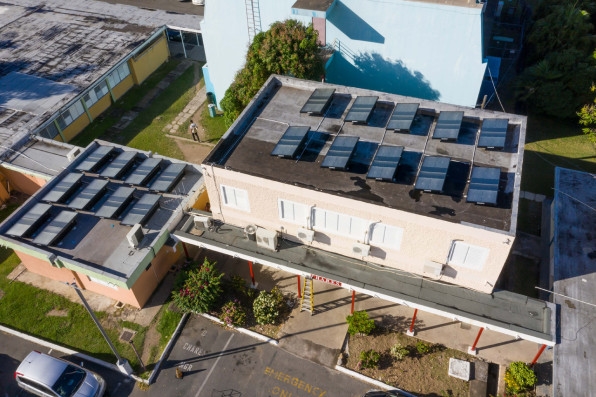
The company’s product, called Source, “use a material science approach that absorbs water from the atmosphere passively,” says Friesen, who is also an engineering professor at Arizona State University. Nanomaterials inside each panel absorb vapor from the air, and then solar power pushes the water into a reservoir, where minerals are added for taste. Then the water can be sent by pipe to taps inside. At the hospital, 20 panels on the roof can provide almost 800 gallons each month, more than patients need.
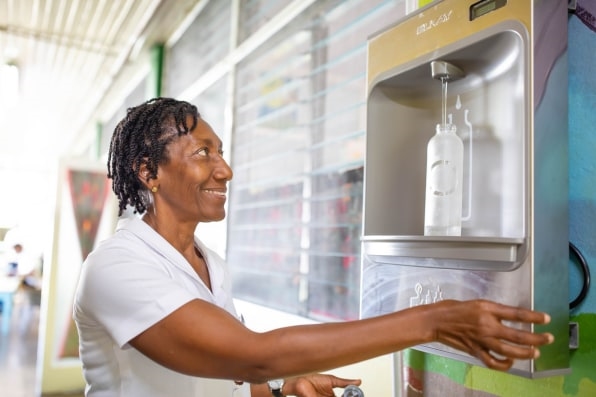
Globally, around 2.1 billion people don’t have clean drinking water at home, either because water infrastructure doesn’t exist or because the water flowing through pipes is contaminated. Zero Mass Water, which has raised $65 million to date–including $22 million in 2018 from Breakthrough Energy Ventures, the new venture fund led by Bill Gates, Jeff Bezos, and Richard Branson, among others–wants to make its technology broadly available. To date, the panels are in 20 countries. In Lebanon, they provide water for orphaned Syrian refugees. In India, the panels are at schools. In northern Kenya, they’re in use at a foundation that rescues girls from child marriage; previously, when they needed water, the girls had to walk two miles each day through the area that they’d escaped and collect it from a dirty river.
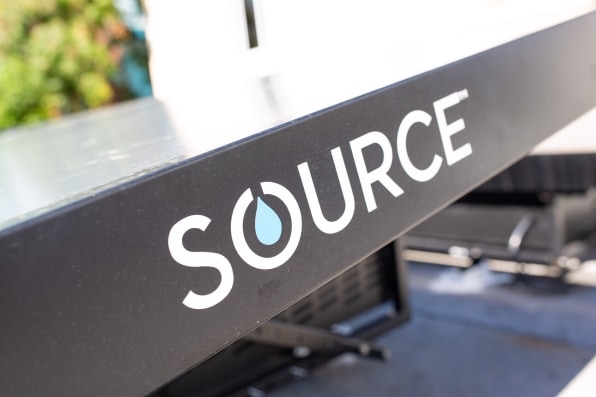
In Puerto Rico, the company installed panels at fire stations after Hurricane Maria when local water supplies were cut off, and that water source is now in place for future storms. Instead of bringing in crates of bottled water after a hurricane, the community can use the panels. “When I think about climate change in general, and then resiliency as a response to that, what we really need to move away from is this conception of reacting to an outlier event,” Friesen says. “Instead, [we need to be] preparing ourselves and preparing populations in a way that is infrastructure free.”
The company also sells panels to wealthier homeowners, using part of the profits to help fund its work in the developing world. “We have a lot of people that are looking to basically lower their plastic footprint and lower their carbon footprint associated with their drinking water, and this provides that,” he says. “So we take a small piece of those profits and we apply that forward to panels that are helping people.”
The technology is still relatively expensive to produce, though Friesen says that the cost will come down as the company scales. He envisions it following the same path as solar power, which is now as cheap as coal. Eventually, water made from the panels could be as cheap as other sources of potable water anywhere in the world, from regions that struggle with long droughts to coastal communities that suffer from saltwater seeping into local water supplies. “It’s effectively like we can put an artesian well anywhere on the planet,” he says.
Correction: This story has been updated to reflect that the water-absorbing panels are not themselves solar panels, but they are run by solar power. Additionally, it’s been updated to remove the implication that water across Jamaica isn’t safe to drink (it is). We regret the error.
(49)

